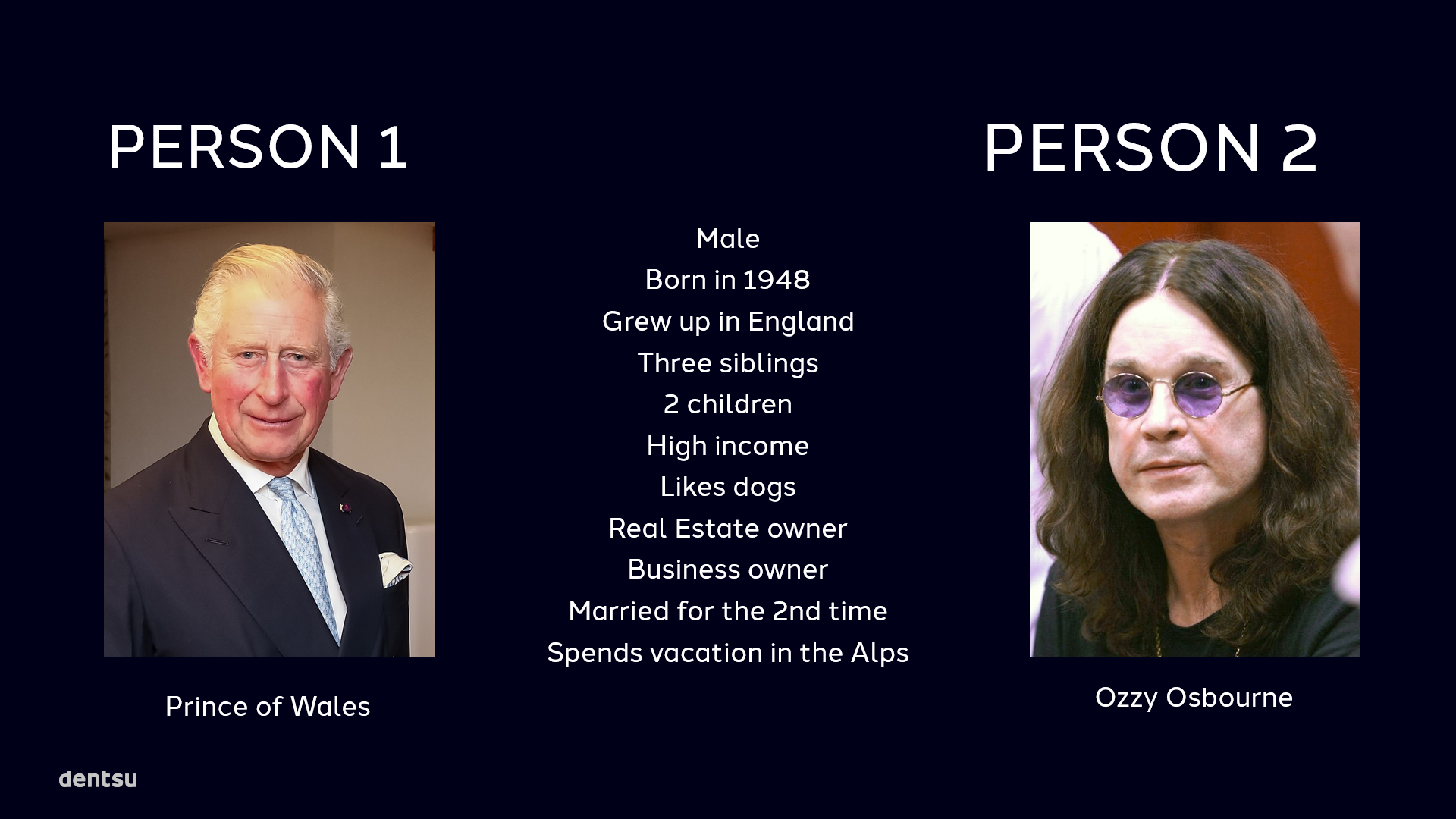
Targeting the right audience is a key step when crafting the overall marketing journey. To be an effective marketer, we need to learn how to dig those golden nuggets of insight to have a better target group than ‘All 20-65’. We will tell you how.
The first question is: “To whom are we selling our product or service to?”. Sound easy but is a tricky question. Why? Because marketers often rely on their very intuitive, “common sense” way of thinking, which often leads to making a variety of mistakes. In the ends wasting your brand money.
To the above question, we hear from time to time an answer: “We want to target everyone, all from 20-65 years of age. Anyone can be our customer!”.
Great idea here is to try to reach as many people as possible. But, as wonderful as that idea might be, that is not the best way as then the target audience is too large and too diverse.
Effectiveness suffers when you target ‘all’

If you name your audience as simply “everyone,” your messaging is going to be so vague that most people will find it irrelevant. In a simple example, you would not want to advertise beef burger to a vegan just because “everybody loves burgers”.
Poor targeting leads to bad reputation of a company and a brand, not to mention all the marketing money wasted for communication to people that at the end, are not really interested or consider buying your product.
Right approach to target group definition
If you believe your product is made for specific target, test if your hypothesis is true and if that is actual or just aspirational target you have in your mind. Don’t rely only on your instincts rather than research.
Just because someone might be interested in some vertical or even a product in what you sell, doesn’t mean they’re going to be a valuable customer for you.
Therefore, you should always ask “Are they just interested or actual buyers of the product itself?” or “Can they even buy (or afford buying) the product?”.
For example, you wouldn’t advertise diapers to the toddler, but to the parents. Or you won’t advertise the latest model of Bugatti to the student. As even though he wants it, he isn’t an actual buyer.
Further differentiation goes between those who could be customers but aren’t yet your clients to those who are already your consumers. Of course, you want both. In this case, you need two different strategic approaches and target groups.
Demography is the wrong approach

Another frequent case of missing the right target is defining it exclusively based on demography. Most people initially think of target group in terms of demographic factors, like age, gender, and education level. This is wrong.
Just look at the picture above if you don’t believe me. The two gentlemen are the same in demographics but could not be more different.
Focusing only on demo’s, you’ll end up neglecting the psychological profiles of your target audience. Far more relevant factor is the behavior and interests of the actual target. It is much better to pay attention to finding out more about how they think and make decisions.
One key thing to always have in mind is also the danger of over targeting. Yes, you can find that one person from Split who loves hard rock and has a toothache at this moment for your rock ’n’ roll dentist practice, but targeting just one person is not effective either.
Want to find out more more?
At the end, it is all in finding the right balance and the right customer to build meaningful communication and strategy approach. We have the tools and data to find out your perfect customer, so let’s not hear that ‘all 20-65’ again.
If you want to learn more about customer segmentation, brand positioning or market research, please contact us and let's discuss more.
Have a data rich week,
Mirna Gjeri,
Head of Data & Research, Dentsu Data Labs

